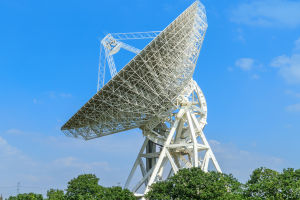Humanity's exploration of the universe has come a long way since our ancestors first gazed at the stars, pondering their mysteries.
From ancient stargazing to modern space missions, our journey to understand the cosmos has been a tale of relentless curiosity, technological innovation, and groundbreaking discoveries!
While the universe remains vast and largely uncharted, significant milestones highlight how far mankind has ventured into this final frontier. For centuries, humanity's understanding of the universe was limited to observations from Earth. Ancient civilizations, such as the Babylonians, Egyptians, and Greeks, created detailed star maps and identified celestial patterns.
Ptolemy's geocentric model dominated early astronomy, positing Earth as the center of the universe, until Copernicus's heliocentric model in the 16th century revolutionized our perspective. The invention of the telescope in the early 1600s, credited to Galileo Galilei, marked a turning point. It allowed humanity to glimpse the moons of Jupiter, the rings of Saturn, and countless stars, laying the groundwork for modern astronomy.
The mid-20th century saw the dawn of space exploration, a monumental leap in humanity's quest to explore the universe.
The United States achieved a defining milestone in 1969 with the Apollo 11 mission, when Neil Armstrong and Buzz Aldrin became the first humans to set foot on the moon.
These achievements paved the way for an era of robotic exploration. Probes like Voyager 1 and 2, launched in 1977, have provided invaluable data about our solar system. Voyager 1, now over 14 billion miles from Earth, has entered interstellar space, carrying humanity's message to the stars through its golden record.
Mankind's exploration of the solar system has expanded significantly with advanced technology. Mars has been a focal point, with rovers such as Curiosity and Perseverance exploring its surface, searching for signs of ancient life.
Missions like Juno orbiting Jupiter and Cassini's study of Saturn have unveiled secrets about these gas giants and their moons. Recent advancements include the Parker Solar Probe, which is studying the sun's outer atmosphere, and the James Webb Space Telescope, which is offering unprecedented views of distant galaxies, stars, and exoplanets.
While no human or probe has yet ventured beyond the solar system, astronomers have extended our reach through powerful telescopes. The discovery of thousands of exoplanets orbiting distant stars has opened new frontiers in the search for life. Observatories like Hubble and James Webb enable us to study the universe's origins and evolution, probing galaxies billions of light-years away.
Mankind's exploration of the universe is still in its infancy. Projects like the Artemis program aim to establish a human presence on the moon, while plans for missions to Mars are underway. The search for extraterrestrial life, deeper cosmic understanding, and sustainable space travel remain priorities for future generations.
Though we have only scratched the surface of what lies beyond, every discovery brings us closer to unraveling the mysteries of existence, inspiring generations to continue this remarkable odyssey.


